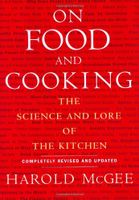Saffron Color
By Harold McGee
Published 2004
Saffron’s intense color comes from a set of carotenoid pigments that account for 10% or more of the dried spice’s weight. The most abundant form, called crocin, is a molecular sandwich of one pigment molecule with a sugar molecule attached at each end. The sugars make the normally oil-soluble pigment into a water-soluble one—and this is why saffron is easily extracted in hot water or milk and works so well as a coloring agent for rice and other nonfatty foods. Crocin is a powerful colorant, and gives a noticeable tinge to water even at 1 part per million.
Become a Premium Member to access this page
Unlimited, ad-free access to hundreds of the world’s best cookbooks
Over 160,000 recipes with thousands more added every month
Recommended by leading chefs and food writers
Powerful search filters to match your tastes
Create collections and add reviews or private notes to any recipe
Swipe to browse each cookbook from cover-to-cover
Manage your subscription via the My Membership page
Part of
Advertisement
Related Recipes
-
-
-
-
Related Reference
-
-
-
-
Advertisement



